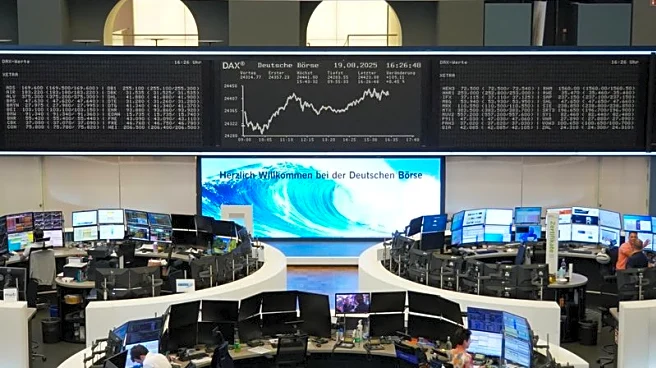What's Happening?
Bitcoin's price has declined to near $113,000, marking a two-week low as market participants reduce positions ahead of the Federal Reserve's Jackson Hole symposium. The decline follows a sharp pullback after hot U.S. economic data diminished expectations for a large rate cut in September. Retail traders have adopted a bearish stance, with the Bitcoin Fear & Greed Index dropping to its lowest level since late June. On-chain data reveals a sharp increase in profit-taking, with long-term investors cashing in gains, suggesting a consolidation phase in the market.
Why It's Important?
The bearish sentiment and profit-taking among long-term investors indicate potential volatility and uncertainty in the Bitcoin market. The upcoming Federal Reserve meeting and geopolitical developments, such as potential Russia-Ukraine peace talks, add layers of complexity to market dynamics. A hawkish tone from the Fed could pressure risk assets, including Bitcoin, impacting investor sentiment and market stability. The broader crypto market's decline, with altcoins following Bitcoin's downward trend, underscores the sensitivity to macroeconomic and geopolitical factors.
What's Next?
Market observers are closely monitoring the Federal Reserve's Jackson Hole symposium for guidance on monetary policy, which could influence Bitcoin's trajectory. Geopolitical developments, particularly potential peace talks between Russia and Ukraine, may introduce further uncertainty. Analysts are watching the behavior of long-term holders for signals on Bitcoin's future trajectory, with potential for further growth or risk of a market top. The broader crypto market may continue to experience volatility as macroeconomic and geopolitical factors evolve.
Beyond the Headlines
The current market dynamics highlight the interconnectedness of cryptocurrency with global economic and geopolitical factors. The sensitivity of Bitcoin and altcoins to macroeconomic indicators and geopolitical developments reflects broader shifts in financial markets, where digital assets are increasingly influenced by external events. The potential for geopolitical competition and regulatory changes may impact the long-term stability and growth of the crypto market.













